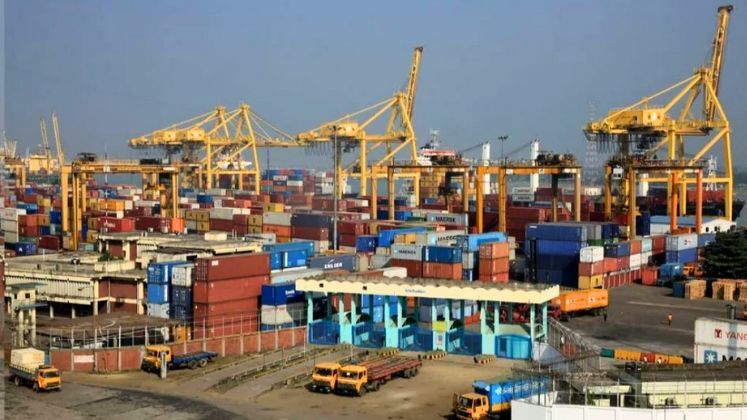
Chittagong Port has managed to significantly reduce the time container ships spend waiting at sea, but new delays at customs are threatening to undermine these gains. While ship turnaround times have improved, congestion is now moving from the anchorage to the port yard, creating a fresh supply chain challenge for Bangladesh.
Thanks to newly dedicated berths at the New Mooring Container Terminal, managed by the Bangladesh Navy-run Chittagong Dry Dock Limited since early July, waiting times for container vessels have dropped from five days to just two. Daily demurrage costs per ship have also fallen by $15,000–$20,000.
However, the rapid unloading of ships has strained yard capacity. As of 19 August, the port yard was operating at over 90% capacity, with 48,541 TEUs stored out of a total capacity of 53,518 TEUs. Port officials warn that maintaining at least 15–20% vacant space is essential for smooth operations.
The primary cause of the current bottleneck is customs delays, exacerbated by a shortage of functioning scanners. Four of the port’s nine scanners were out of order, slowing the processing of import containers and preventing trucks from backloading imports after delivering exports. Consequently, containers are piling up at inland depots.
“Depot owners cannot clear import containers efficiently because scanners are down. As a result, export trucks return empty,” said Ruhul Amin Sikder, secretary general of the Bangladesh Inland Container Depot Association. Currently, around 76,000 containers, including 60,000 empties, are stuck across 21 off-docks, creating additional pressure on port operations.
Customs officials said that two scanners have been repaired, while the remaining two require imported parts, which could take time to arrive due to procedural delays. Long-standing issues persist as well: over 10,000 containers, some stored for more than 20 years, continue to occupy significant yard space, with little action from customs authorities.
The delays are affecting businesses across sectors. Yasir Arafat, owner of Warka and Jobaer Agro Industry Limited, said his factory was forced to halt production after a 27.5-tonne shipment of pink salt remained stuck for over 13 days, despite taxes being paid.
Industry experts stress that solutions must go beyond berthing space. They call for stronger customs oversight, digitisation of procedures, faster auctions for abandoned containers, scanner repairs, upgraded lab facilities, and the recruitment of skilled logistics professionals.
“The government must strengthen customs with more manpower and curb corruption,” said Mahfuzul Hoque Shah, former director of the Chattogram Chamber of Commerce and Industry. Captain Anam Chowdhury, a maritime expert, added, “Hiring professional supply chain managers could make operations far more efficient.”
Despite the customs challenges, the port has made progress. Since 7 July, vessel congestion at outer anchorage has decreased dramatically, with daily waiting ships dropping from 17–20 to 5–6, and daily handling rates rising. On 19 August, the port processed 9,644 TEUs, including imports and exports.
Chattogram Port Authority Secretary Md Omar Faruk said, “Our capacity has increased to around 60,000 TEUs. However, simultaneous scanner failures have disrupted unloading, and the matter has been reported to authorities.”
The Bangladesh Navy’s management of the New Mooring Container Terminal has boosted handling capacity by 30%, helping reduce ship wait times, according to Bida Chairman Ashiq Chowdhury. Still, unless customs delays are addressed, the port risks shifting its congestion problem from the sea to the shore.






